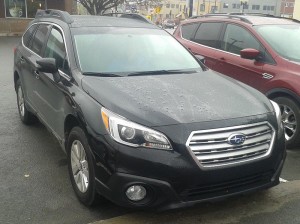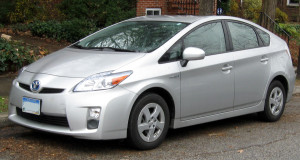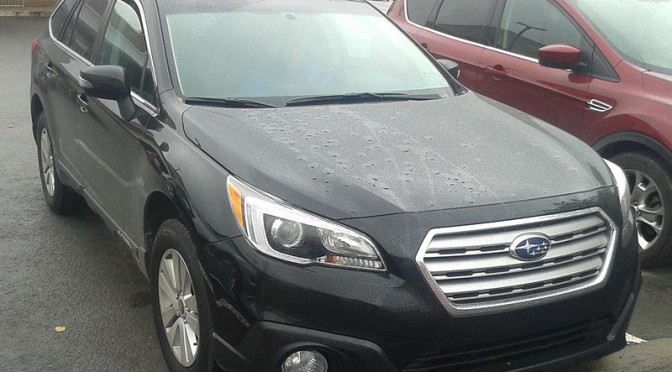 Which vehicles are safest for small and large families? How do we even begin to answer that question? Well, thanks to the latest IIHS Status Report, we’ve got some updated answers! But first, what are the status reports?
Which vehicles are safest for small and large families? How do we even begin to answer that question? Well, thanks to the latest IIHS Status Report, we’ve got some updated answers! But first, what are the status reports?
The status reports are newsletters the Insurance Institute for Highway Safety publishes on a monthly basis about the latest trends in auto safety. Every now and then, they publish special issues that have to do with DDRs, or driver death rates.
What are the 2015 IIHS driver death rates, and why do they matter?
I’ve long been a fan of the IIHS’ driver death rate studies, which are essentially statistical analyses of the rates at which drivers died in fatal single or multiple vehicle collisions across a range of vehicles within certain model years. The last report was released in 2011, and it’s been almost four years since then, but they just released the latest collection of data in the February 2015 Status Report here.
Reading the whole report is definitely a good idea, but in this post, I’d just like to look at some of the cars ranked well in the driver death rate studies and provide suggestions for families interested in safe transportation from the last few years (e.g., between 2008 and 2011 model years). The driver death rates don’t predict whether you’re going to live or die in any given crash, but they do give you a good idea of which drivers did and didn’t when crashing in recent vehicles over the last few years.
A driver death rate of 20 for vehicle X, for example, suggests that if 1 million copies of vehicle X were driven for 1 year (or 500,000 were driven for 2 years, etc), you could expect 20 drivers of vehicle X to die within that period of time. As a result, lower numbers are better.
Let’s dive into the data!
The safest cars for small and large families, per the 2015 IIHS Driver Death Rate Status Report
First of all, I’m defining “safe” as a driver death rate of less than 19. I chose 19 because it is exactly half of the average driver death rate figure (38) calculated for all cars in this study. The overall driver death rates calculated in the study for all vehicles were 38 for cars, 23 for minivans, 18 for SUVs, and 29 for pickup trucks. In other words, every car I recommend here is on average, at least twice as safe as the average car included in the IIHS study. Some are much more.
Keep in mind that the driver death rates are extrapolations based on fatal crashes involving drivers within the model year and calendar year time spans. This doesn’t take into account passenger deaths, since each vehicle involved in a collision features a driver, but not necessarily a passenger.
Secondly, I’m defining “small” families as those featuring fewer than 5 individuals, such as those with 2 adults and 2 children, since this is close to the median number of individuals in a household in the United States. I’d define “large” families as families with 5 individuals, such as two parent households with 3 children.
While there are certainly families with more than 3 children, none of these families can fit into cars, since almost all cars sold in the US only feature 2 rows of seats. If you need more room, you’ll want to check out the forthcoming posts on the safest minivans and SUVs for small and large families. We’ll focus on just cars today to keep things from getting too long.
How safe is the Subaru Outback for small and large families with young children?
 With all that out of the way, if I were interested in a small car and had a family of 3, 4, or 5, I’d start and end with…
With all that out of the way, if I were interested in a small car and had a family of 3, 4, or 5, I’d start and end with…
1. The 2010-2015 Subaru Outback. It featured an impressively low overall driver death rate of 6, with a projected multi-vehicle driver death rate of 0 and a single vehicle driver death rate of 6, with 3 of those deaths due to rollovers. In other words, statistically, virtually no drivers died in the Subaru Outback during the observed time frame. When you look at the impressive safety scores of the Outback, this becomes understandable, as it features a strong roof, a good frontal moderate offset crash score, a good side impact scores, side airbags, and ESC, all of which I consider vitally important in designing safe cars.
It’s interesting to note, however, that the Outback generation observed in this study had not yet been designed to pass the small overlap test, which shows that test scores aren’t everything when it comes to driver safety. The most important factor has always been good driving. This, naturally, may change when self-driving vehicles become the norm.
The driver death rate of 6, by the way, is the lowest that has ever been calculated for a station wagon, although not the lowest that’s ever been calculated for a car. In fact, in this study, two cars achieved a driver death rate of zero: The Audi A4 and the Subaru Legacy 4WD, which the Outback is based on. So why don’t I recommend either of these?
Well, it’s not that I don’t recommend either as much as I prefer the Outback due to its additional utility for fitting supplies in its hatchback. If you don’t need the additional space, I’d go with the Legacy, while if you didn’t mind expensive repairs, I’d go with the Audi. Presuming those features matter to you, however, you’ll want to go with the Outback if you have the chance to. You’ll also want to keep in mind the Volkswagen Jetta hatchback, which also achieved a driver death rate of 6 along with the Outback.
While 4-person families would have the best time fitting into the Outback, my 3 across car seat guide for the Outback here shows that you could definitely make things work in the Outback with up to 3 children without very much trouble. Thanks to the generous trunk space, you’d also have room for a number of travel supplies when taking trips to visit family, vacations across the country, or simply hauling groceries and supplies back from a shopping trip.
How safe is the Toyota Prius for small and large families with young children?
 Next, if fuel economy were a high priority along with safety, I’d recommend both small and large families look into…
Next, if fuel economy were a high priority along with safety, I’d recommend both small and large families look into…
2. The 2010-2011 Toyota Prius. It featured an overall driver death rate of 16, which is the lowest driver death rate ever calculated for a small car. Of those 16 projected driver deaths, 9 were projected to occur due to multi-vehicle collisions, while 7 were projected to occur from single-vehicle collisions (e.g., crashing into a tree), with 4 of those 7 involving rollovers.
To provide another perspective of how impressive a driver death rate of 16 in a small car is, only a few short years ago, the Honda Odyssey had a driver death rate of 17, which was (and continues to be) highly impressive. And the current generation Toyota Sienna scored a surprisingly high (in the bad way) driver death rate of 27. Drivers, in other words, were actually more likely to live while driving a Prius than a Sienna. This speaks volumes.
The next closest small car is also a Toyota, the Corolla, which had a death rate twice as high at 32. That said, 32 is also still much better than how small cars did as recently as a few years ago, and again points to the life-saving features of side airbags and ESC.
Families of 5 will appreciate the 3 across car seat capacities of the Toyota Prius as well as its generous trunk space, even though you aren’t going to have as many options for 3 across in the Prius as you will in the Outback (or Legacy) simply because the former are wider vehicles. Similarly, the trunk space in the Prius isn’t going to be as large as that offered in the Outback, but it will still be larger than what you’d find in the A4 or in the Legacy, which is why I recommend the Prius as another safe choice for small and large families alike.
What are other recommended safe cars for small and large families based on the IIHS report?
Other honorable mentions for small and large families interested in cars include the Acura TSX, which registered a driver death rate of 7, the Volkswagen CC (essentially a Passat) with a DDR of 8, the Honda Accord sedan with a DDR of 19, the Volkswagen Jetta sedan with a DDR of 20, the Volkswagen Jetta hatchback with a DDR of 6, and the Ford Crown Victoria with a DDR of 4. These are all considered affordable, or non-luxury cars.
Honorable mentions for safe luxury cars include the Acura TL with a DDR of 5, the Mercedes C-Class with a DDR of 7 and 10, depending on whether you chose the 4WD or 2WD versions, the BMW 328i with a DDR of 7, the Lexus ES 350 with a DDR of 9, the BMW 328xi with a DDR of 16, the 2WD Lexus IS 250 with a DDR of 16, and the Lexus LS 460 with a DDR of 18. I’ve included links to each vehicle I’ve reviewed for 3 across compatibility to give you an idea of which car seats will work in those vehicles.
Next we’ll take a look at which minivans and SUVs are the best choices for small and large families, per the IIHS driver death rates. Stay tuned for details!
—
If you find the information on car safety, recommended car seats, and car seat reviews on this car seat blog helpful, you can shop through this Amazon link for any purchases, car seat-related or not. Canadians can shop through this link for Canadian purchases.

